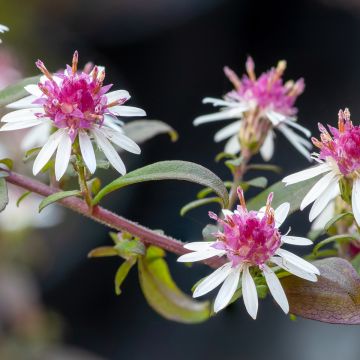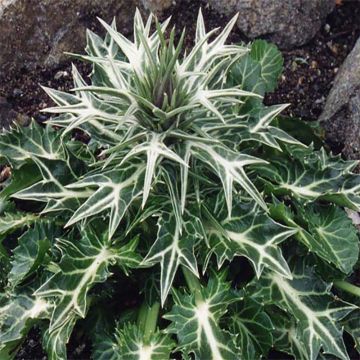

Aster sedifolius - Thick-stemmed Aster


Aster sedifolius - Thick-stemmed Aster


Aster sedifolius - Thick-stemmed Aster

Aster sedifolius - Thick-stemmed Aster


Aster sedifolius - Thick-stemmed Aster
Aster sedifolius - Thick-stemmed Aster
Aster sedifolius
Thick-stemmed Aster, Thickstem Aster
Yes, discreet plant!!! So discreet that the 2 pots received are devoid of any young shoot... no vegetation!! Luckily, there is the label to identify!!!
Catherine, 11/05/2023
Special offer!
Receive a €20 voucher for any order over €90 (excluding delivery costs, credit notes, and plastic-free options)!
1- Add your favorite plants to your cart.
2- Once you have reached €90, confirm your order (you can even choose the delivery date!).
3- As soon as your order is shipped, you will receive an email containing your voucher code, valid for 3 months (90 days).
Your voucher is unique and can only be used once, for any order with a minimum value of €20, excluding delivery costs.
Can be combined with other current offers, non-divisible and non-refundable.
Home or relay delivery (depending on size and destination)
Schedule delivery date,
and select date in basket
This plant carries a 12 months recovery warranty
More information
We guarantee the quality of our plants for a full growing cycle, and will replace at our expense any plant that fails to recover under normal climatic and planting conditions.

Would this plant suit my garden?
Set up your Plantfit profile →
Description
The Aster sedifolius (sedifolia), now renamed Galatella sedifolia, is a wild plant found in the scrubland, dry meadows, and uncultivated land of the Mediterranean. This species, not very tall, is recognised by its narrow and erect habit and its narrow leaves, which are quite dark green and can resemble those of certain sedums. Despite its modest appearance for most of the year, this aster reveals its charm in autumn, adorned with many delicate star-shaped purple flowers with golden centres. It is a problem-free perennial in poor and limestone soils, perfect for natural or drought-tolerant gardens.
The Goldmoss Aster, also known as Sedum-leaf Aster or Creeping Aster, belongs to the Asteraceae family. Originally from Central Europe, this species is also part of Mediterranean flora: it can be found on hillsides and along roads or paths by the Mediterranean Sea. Resistant to cold and tolerant of limestone soils, this species can grow up to 1450 m (4757ft) in altitude and is well adapted to heat and summer drought.
It is a perennial plant with upright, sparsely branched stems that measures 30 to 50 cm (12 to 20in) in height and 25 to 30 cm (10 to 12in) in width. Its stems are densely leafy and covered with rough, elongated, and narrow leaves, measuring 4 to 5 cm (2in) in length, acute, almost linear. Flowering occurs from August to late October or early November, depending on the region and climate. The flowers are abundant and long-lasting. They take the form of numerous small mauve star-shaped flowers in 2.5 cm (1in)-wide heads, arranged in compact clusters called corymbs, which are 10 to 15 cm (4 to 6in) wide and carried at the ends of the stems. Each head comprises several slender, spaced ligules of lilac-blue, surrounding a centre filled with tiny tubular flowers of bright yellow. After pollination, the flowers give way to plume-like fruits in cream-white to greyish, called achenes, which the wind will disperse. The above-ground vegetation of this aster dries up and dies in winter, then regrows in spring.
It is impossible to imagine our gardens without aster flower beds or borders. This species is not very demanding regarding soil type; it even tolerates drought and rocky soils very well. It pairs perfectly with grasses; choose among the more moderate and less demanding varieties, such as Eragrostis spectabilis (pink cloud in August), Muhlenbergia capillaris (pink in autumn), or Miscanthus sinensis Yaku Jima. It gets along well with all other plants in flower beds, such as Salvia microphylla, Aster ericoides, and Aster cordifolius. Asters grow quickly and fill empty spaces in a newly planted hedge. In flower beds, you can create layered and rounded volumes by combining asters of different statures and sizes, such as Aster ericoides prostratus 'Snow flury', Aster laevis, or Aster turbinellus—another idea for pairing with autumn-flowering roses, which its delicate flowering perfectly enhances.
Aster sedifolius - Thick-stemmed Aster in pictures






Flowering
Foliage
Plant habit
Botanical data
Aster
sedifolius
Asteraceae
Thick-stemmed Aster, Thickstem Aster
Galatella sedifolia
Mediterranean
Other Asters
View all →Planting and care
Plant the Aster with sedum leaves in autumn or spring in ordinary soil, even chalky, clayey, or stony soil, well-drained and fresh to dry in summer. It appreciates a very sunny exposure but tolerates partial shade well, where it will have a slightly looser habit. In a bed, maintain a spacing of at least 50 cm (20in) between the plants. It is preferable to prune the faded stems to ground level to maintain a compact habit. This plant can self-seed in the garden in light soils.
Planting period
Intended location
Care
Planting & care advice
-
, onOrder confirmed
Reply from on Promesse de fleurs
Similar products
Haven't found what you were looking for?
Hardiness is the lowest winter temperature a plant can endure without suffering serious damage or even dying. However, hardiness is affected by location (a sheltered area, such as a patio), protection (winter cover) and soil type (hardiness is improved by well-drained soil).

Photo Sharing Terms & Conditions
In order to encourage gardeners to interact and share their experiences, Promesse de fleurs offers various media enabling content to be uploaded onto its Site - in particular via the ‘Photo sharing’ module.
The User agrees to refrain from:
- Posting any content that is illegal, prejudicial, insulting, racist, inciteful to hatred, revisionist, contrary to public decency, that infringes on privacy or on the privacy rights of third parties, in particular the publicity rights of persons and goods, intellectual property rights, or the right to privacy.
- Submitting content on behalf of a third party;
- Impersonate the identity of a third party and/or publish any personal information about a third party;
In general, the User undertakes to refrain from any unethical behaviour.
All Content (in particular text, comments, files, images, photos, videos, creative works, etc.), which may be subject to property or intellectual property rights, image or other private rights, shall remain the property of the User, subject to the limited rights granted by the terms of the licence granted by Promesse de fleurs as stated below. Users are at liberty to publish or not to publish such Content on the Site, notably via the ‘Photo Sharing’ facility, and accept that this Content shall be made public and freely accessible, notably on the Internet.
Users further acknowledge, undertake to have ,and guarantee that they hold all necessary rights and permissions to publish such material on the Site, in particular with regard to the legislation in force pertaining to any privacy, property, intellectual property, image, or contractual rights, or rights of any other nature. By publishing such Content on the Site, Users acknowledge accepting full liability as publishers of the Content within the meaning of the law, and grant Promesse de fleurs, free of charge, an inclusive, worldwide licence for the said Content for the entire duration of its publication, including all reproduction, representation, up/downloading, displaying, performing, transmission, and storage rights.
Users also grant permission for their name to be linked to the Content and accept that this link may not always be made available.
By engaging in posting material, Users consent to their Content becoming automatically accessible on the Internet, in particular on other sites and/or blogs and/or web pages of the Promesse de fleurs site, including in particular social pages and the Promesse de fleurs catalogue.
Users may secure the removal of entrusted content free of charge by issuing a simple request via our contact form.
The flowering period indicated on our website applies to countries and regions located in USDA zone 8 (France, the United Kingdom, Ireland, the Netherlands, etc.)
It will vary according to where you live:
- In zones 9 to 10 (Italy, Spain, Greece, etc.), flowering will occur about 2 to 4 weeks earlier.
- In zones 6 to 7 (Germany, Poland, Slovenia, and lower mountainous regions), flowering will be delayed by 2 to 3 weeks.
- In zone 5 (Central Europe, Scandinavia), blooming will be delayed by 3 to 5 weeks.
In temperate climates, pruning of spring-flowering shrubs (forsythia, spireas, etc.) should be done just after flowering.
Pruning of summer-flowering shrubs (Indian Lilac, Perovskia, etc.) can be done in winter or spring.
In cold regions as well as with frost-sensitive plants, avoid pruning too early when severe frosts may still occur.
The planting period indicated on our website applies to countries and regions located in USDA zone 8 (France, United Kingdom, Ireland, Netherlands).
It will vary according to where you live:
- In Mediterranean zones (Marseille, Madrid, Milan, etc.), autumn and winter are the best planting periods.
- In continental zones (Strasbourg, Munich, Vienna, etc.), delay planting by 2 to 3 weeks in spring and bring it forward by 2 to 4 weeks in autumn.
- In mountainous regions (the Alps, Pyrenees, Carpathians, etc.), it is best to plant in late spring (May-June) or late summer (August-September).
The harvesting period indicated on our website applies to countries and regions in USDA zone 8 (France, England, Ireland, the Netherlands).
In colder areas (Scandinavia, Poland, Austria...) fruit and vegetable harvests are likely to be delayed by 3-4 weeks.
In warmer areas (Italy, Spain, Greece, etc.), harvesting will probably take place earlier, depending on weather conditions.
The sowing periods indicated on our website apply to countries and regions within USDA Zone 8 (France, UK, Ireland, Netherlands).
In colder areas (Scandinavia, Poland, Austria...), delay any outdoor sowing by 3-4 weeks, or sow under glass.
In warmer climes (Italy, Spain, Greece, etc.), bring outdoor sowing forward by a few weeks.



































